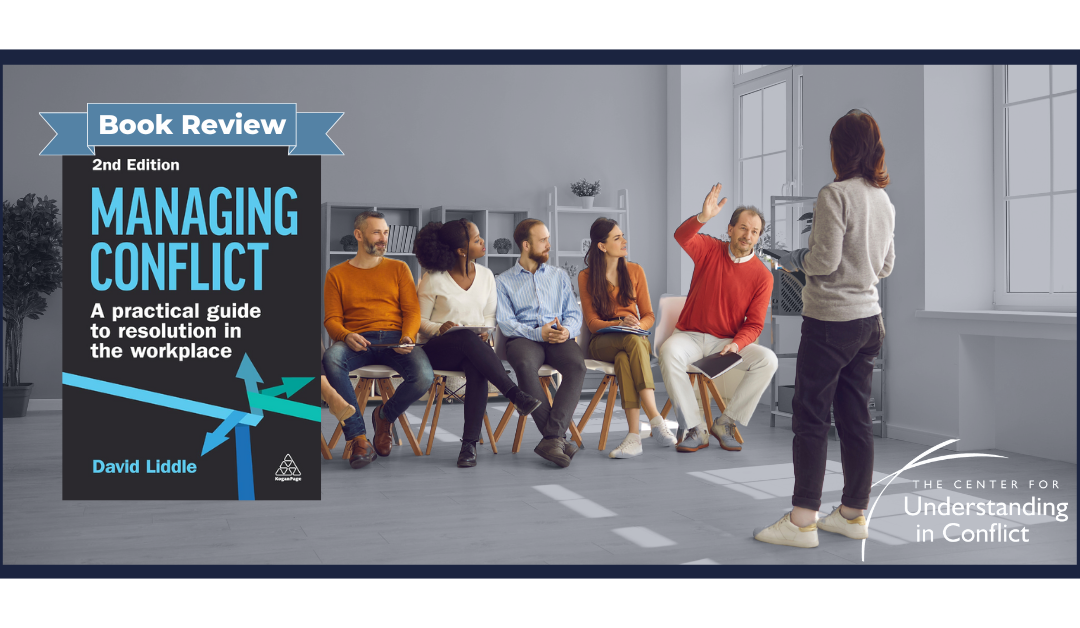Managing Conflict, a unique and comprehensive resource, is a must-read for conflict resolution and mediation practitioners, particularly those focused on workplace mediation. The second edition of this book, which is a testament to its value, enhances its predecessor’s strengths by providing updated insights and practical strategies that mirror the ever-changing workplace dynamics and conflict management. It also includes a case study by Pat Lau, an understanding-based workplace mediator at Intel Corporation and Center alum, which delves into how organizations are incorporating internal mediation programs to address workplace conflicts and disputes.
One of the critical strengths of “Managing Conflict” is its clear articulation of the principles and practices that underpin effective mediation. Liddle underscores the importance of empathy, active listening, and neutrality in mediation. He provides detailed guidance on creating a safe and conducive environment for dialogue, which is crucial for resolving workplace disputes. His emphasis on building trust and rapport with all parties involved in a conflict is particularly noteworthy. Liddle argues that the mediation process is only possible with trust, a sentiment that resonates deeply with experienced practitioners.
Liddle’s approach to conflict resolution is holistic, considering the immediate dispute and the broader organizational context. He emphasizes the role of organizational culture in either mitigating or exacerbating conflicts. This perspective is invaluable for mediators, encouraging them to look beyond the surface issues and consider systemic factors contributing to the conflict. His discussion on the importance of leadership in conflict resolution is particularly compelling. He argues that leaders play a critical role in shaping the conflict culture of an organization and that effective conflict management should be a core competency for anyone in a leadership position.
Another significant aspect of the book is its focus on restorative practices. Liddle advocates for a refreshing approach to conflict resolution, which seeks to repair relationships and rebuild trust rather than merely addressing the immediate issues. This approach aligns well with contemporary mediation practices, prioritizing sustainable, long-term solutions over quick fixes. Liddle provides practical tools and techniques for implementing restorative practices in the workplace, making this a valuable resource for mediators committed to fostering a positive and collaborative work environment.
The second edition of “Managing Conflict” also addresses the impact of recent developments, such as remote working and the increased workforce diversity, on conflict dynamics. Liddle acknowledges these changes’ new challenges and offers strategies for managing conflicts in a virtual environment, particularly relevant in the current context, where many organizations grapple with the complexities of remote work and the need to foster inclusive workplaces. Liddle’s insights into how to adapt mediation practices to these new realities are both timely and practical.
From a practitioner’s perspective, one of this book’s most valuable aspects is the resources it provides and the mindset it encourages. Liddle doesn’t just advocate for continuous learning and development; he inspires it. His call for mediators to reflect on their practice, seek feedback, and engage in ongoing professional development is not just a suggestion; it’s a source of motivation and inspiration, making the reader feel empowered and driven to improve their skills.
Liddle’s holistic and refreshing approach to conflict resolution, combined with his practical insights and real-life examples, provides a robust framework for addressing workplace conflicts effectively. This second edition is particularly relevant to contemporary workplace challenges, offering strategies adaptable to the evolving nature of work.
